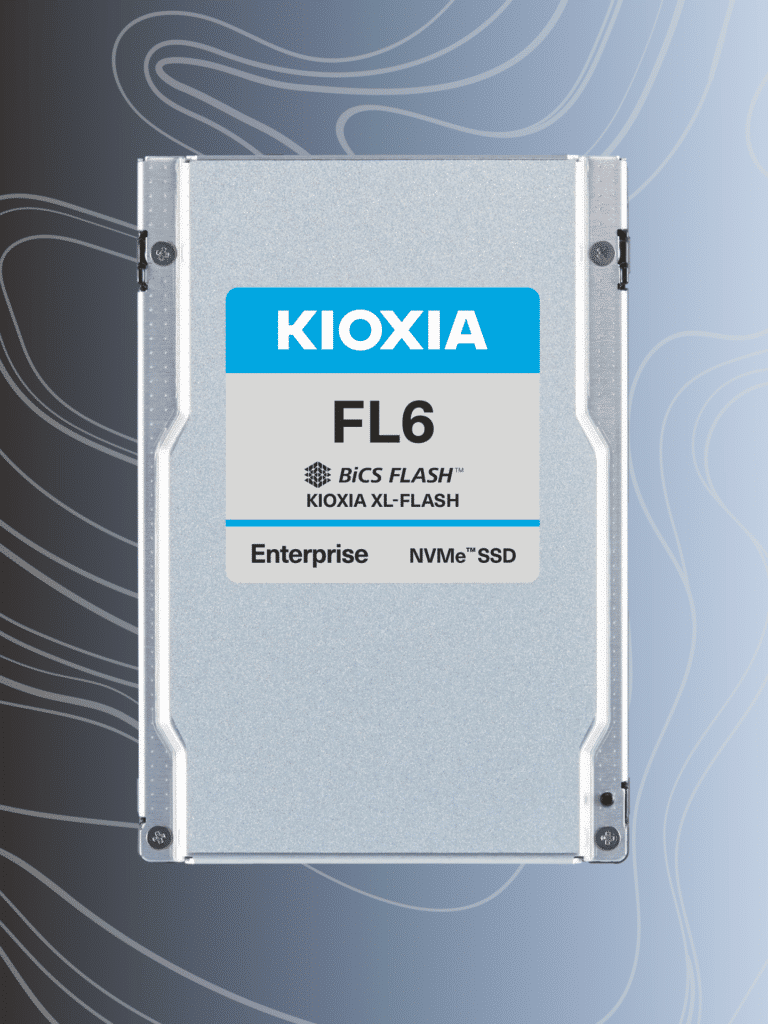Kioxia launched their storage-class memory (SCM), dubbed XL-FLASH, over two years ago. It took a good deal of time to deliver a packaged solution in the form of an SSD though, and Kioxia wasn’t the first to get there. It was DapuStor leading the way with XL-FLASH shipping the H3900 toward the end of 2020. This discrepancy happens at times with these big companies that have both a NAND fabrication business and a packaged SSD business. Now the company is shipping its own SCM SSD, the Kioxia FL6.
Kioxia launched their storage-class memory (SCM), dubbed XL-FLASH, over two years ago. It took a good deal of time to deliver a packaged solution in the form of an SSD though, and Kioxia wasn’t the first to get there. It was DapuStor leading the way with XL-FLASH shipping the H3900 toward the end of 2020. This discrepancy happens at times with these big companies that have both a NAND fabrication business and a packaged SSD business. Now the company is shipping its own SCM SSD, the Kioxia FL6.

SCM is designed to address high-performance application needs, placing this faster class of storage between DRAM and traditional NAND-based SSDs. This can take a variety of shapes, the most common in the enterprise being persistent memory (PMem) and more traditional U.2 SSD designs. In this case, the Kioxia FL6 is the latter.
Kioxia FL6 Highlights
The details on the Kioxia FL6 are a little light overall, Kioxia doesn’t have any datasheets published at this point, just the press release. That said, we’ve been able to wring out at least some of the high-level details.
The FL6 will be delivered as a U.2 SSD that leverages the PCIe Gen4 interface. Notably, the drives are dual-ported, which gives them more flexibility into places like storage arrays, that require the ability for two controllers to see all of the SSDs in an array. While SCM drives are usually capacity-limited, the FL6 will come in capacities from 800GB to 3.2TB. The 3.2TB capacity is pretty strong comparatively, as the Intel P5800X tops out at 1.6TB.
Because XL-FLASH uses 1-bit-per-cell (SLC) customers should expect a very good endurance spec. Kioxia posts the FL6 at 60 DWPD, with a MTBF of 2.5M hours. By comparison, the P5800X in 1.6TB capacity offers a 100 DWPD spec and 2M hour MTBF. Both offer excellent endurance, something that’s critical for the caching workloads these drives are often tasked for.
When it comes to performance Kioxia didn’t have any information to provide. They did issue some generic statements like, “…performs well on low queue depth workloads but its true strengths are revealed as workloads become more demanding and mixed. In these environments, FL6 drives deliver reliable quality of service – a critical attribute for a wide variety of latency-sensitive applications.” It’s hard to know what that means exactly, hopefully, they’ll get us a review sample soon enough so we may find out.
The Kioxia FL6 Series is sampling to key partners and customers now.




 Amazon
Amazon